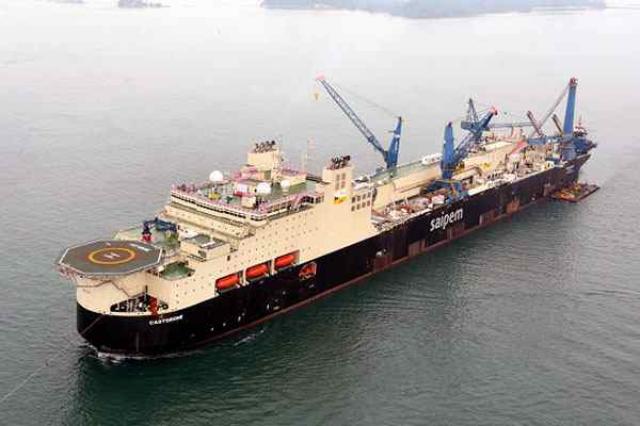The Ichthys LNG Project in Australia, operated by INPEX, has launched setting down of the deepwater pipe for its gas export pipeline (lenght of 889 km) with the help of Castorone -deepwater installation vessel of Saipem. The procedure started on February 6, and the vessel will bring into position the rest of the 718-km offshore portion of the 42-inch diameter pipeline. In November 2014 of the 164-km shallow water portion was laid by the SEMAC 1. The 7km of the pipeline left to be constructed are positioned onshore.

Gas from the Ichthys area will be subjected to preparatory processing offshore to get rid of both water and raw liquids, including condensate. After that the gas will be exposed to the onshore processing devices in Darwin using the pipeline. The laying of the deepwater pipe is planned to be finished in late 2015. Upon completion the Ichthys LNG Project GEP will appear as the fifth longest international subsea pipeline and the longest in the southern hemisphere.
Castorone is a DP3 ice-class vessel constructed in Yantai Raffles in China. Its fitting out was carried in Singapore by both Keppel Singmarine and Keppel Shipyards. The year of its delivery was 2013, the place of its first putting into operation was the Gulf of Mexico. The storage system and the pipe handling were constructed by the Navalimpianti Tecnimpianti Group and Navalprogetti helped with the engineering during the final stage of its building. The Krylov Shipbuilding Research Institute in Russia was responsible for the propulsion and resistance tests.
The vessel, constructed to carry out at speed up to 13 knots, can readily be put into movement around the world. The capability of the 330m vessel shows it can transfer from extremely-deep to shallow waters simply by operating with the stinger. It has the capacity of positioning either up to 60 inch pipes in S-lay arrangement or up to 36 inch pipes in J-lay arrangement. An exceptional J-lay tower has a capability of 2,500t. Therefore Castorone can perform both pipeline and trunkline operations in water deep up to 3,000m.
The 120m long stinger stretches out from the rear end of the ship and is composed of three distinctive and adaptable portions that hold up the pipe as it is moved into the water. Engineering company HGG has produced over 300 pipes of different diameters for the building of the stinger.
The Ichthys LNG Project is anticipated to come up with 8.4 million tons of LNG and 1.6 million tons of LPG annually, together with approximately 100,000 barrels of condensate daily at its highest periods. Further construction, engineering and procurement of the Ichthys LNG Project is under way. The production is planned to start by the end of 2016. The Ichthys LNG project has an anticipated operational duration of at least 40 years.